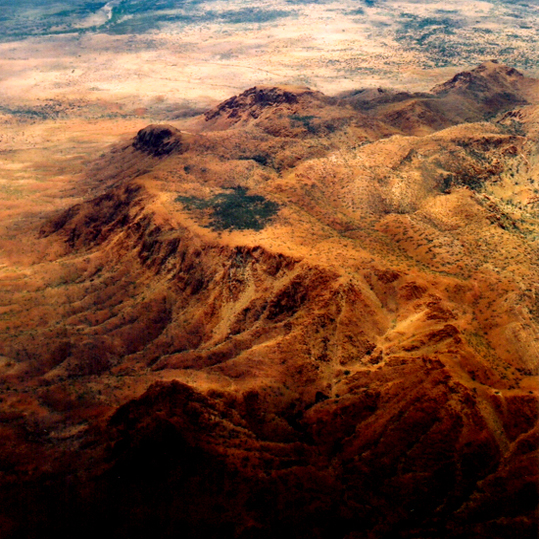Search
Democracy Links
Member's Off-site Blogs
of bolides and deforestation...

(Gosse's Bluff, Australia)
Deforestation has revealed what could be a giant impact crater in Central Africa, scientists say.
The 36-46km-wide feature, identified in DR Congo, may be one of the largest such structures discovered in the last decade.
Italian researchers considered other origins for the ring, but say these are unlikely.
They presented their findings at the recent Lunar and Planetary Science Conference in Texas, US.
The ring shape is clearly visible in the satellite image by TerraMetrics Inc reproduced on this page.
Only about terrestrial 25 impact craters are of comparable size or larger, according to the web-based Earth Impact Database.
Giovanni Monegato, from the University of Padova, said the feature was revealed only after trees were cleared from the area over the last decade.
The Unia River flows around the ring structure, underlining its round shape. The central part of the Wembo-Nyama feature is irregular and about 550m in elevation.
This is about 50-60m higher than the depression where the river flows. Although this might sound counter-intuitive, experts say that impact craters can sometimes lift up dense rocks. The surrounding rocks may subsequently erode, leaving a dome.
http://news.bbc.co.uk/2/hi/science/nature/8526093.stm
----------------------------
In Australia, there are two well-known such impact zones. One is the Wolf Creek Crater, and the other one is Gosse's Bluff, illustrated at top (picture by Gus, portion of the bluff only). The WCC is quite recent (2 million years ago) and only 800 metres across, yet it is one of the best formed impact crater to be seen. Gosse's Bluff is a much larger circular mountainous range. The event happened about 130 million years ago when a comet or a very large meteorite hit the earth, there. The impact pushed debris in a larger circle, about 60 kilometres in diameter while the rocks at the centre were smashed and heaved up as a splash back. The trauma created would have been felt for years, with dust, clouds, atmospheric disturbances, that in conjunction with other factors — and this is only speculation from Gus — may have led to the warm event at the beginning of the Cretaceous, 120 million years ago or so.
Gosse's Bluff is the remnant of the splash back ("experts say that impact craters can sometimes lift up dense rocks"), It is about 5 kilometres in diameter and attests to the force of some cosmic impacts... The moon is full of them — craters, splash-backs included... We can see then with an ordinary pair of binoculars...
In DR Congo, the sad part for me is that "deforestation" is giving us interesting clues about the past. The area should not become a desert though because of the rain, but it's got a good chance of becoming a "wasteland" or a GM crop crap-land... Meanwhile the removal of trees has contributed to global warming by eliminating an important carbon sink and the destruction (usually by burning) of the wastes from the vanished forest.
- By Gus Leonisky at 11 Mar 2010 - 7:44am
- Gus Leonisky's blog
- Login or register to post comments
Recent comments
9 hours 52 min ago
10 hours 9 min ago
10 hours 16 min ago
12 hours 28 min ago
13 hours 14 min ago
13 hours 40 min ago
13 hours 45 min ago
14 hours 31 min ago
16 hours 20 min ago
18 hours 14 min ago